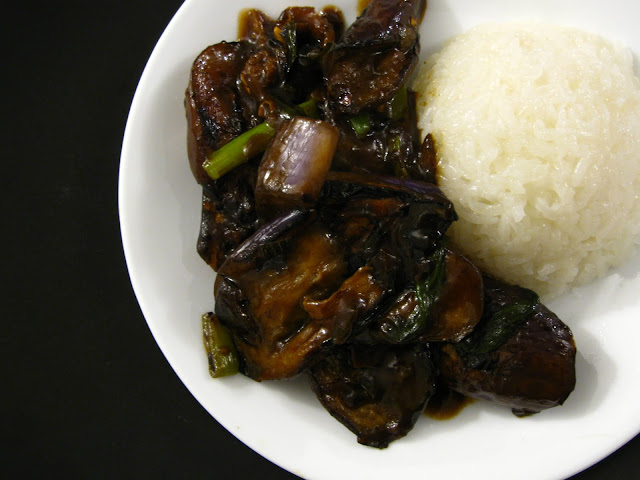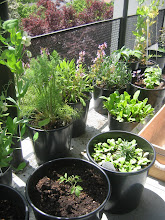Natto is a thing I'd heard about, but I'd never seen it until I went to Uwajimaya in Beaverton last weekend. I thought it sounded like a pretty strange thing, and even though I like trying all sorts of strange things, I was a little scared of it.
 It came in a 3 pack in the frozen section. I think the gist of the little cartoon is that you warm it up then stir it around with your chopsticks. The cartoon was baffling until I opened up the package. I thought for sure it was a picture of a large pot, indicating that the natto should be stirred into a pile of boiled eggs. Which made no sense at all when I looked up eating instructions online. Yes, I did need to look up instructions for how to eat this. Even so, that cartoon... Once I opened the package the meaning of the drawing became apparent. The orange blob is a little dab of seasoning, and the round things that I mistook for a bunch of boiled eggs are, in fact, the fermented soybeans.
It came in a 3 pack in the frozen section. I think the gist of the little cartoon is that you warm it up then stir it around with your chopsticks. The cartoon was baffling until I opened up the package. I thought for sure it was a picture of a large pot, indicating that the natto should be stirred into a pile of boiled eggs. Which made no sense at all when I looked up eating instructions online. Yes, I did need to look up instructions for how to eat this. Even so, that cartoon... Once I opened the package the meaning of the drawing became apparent. The orange blob is a little dab of seasoning, and the round things that I mistook for a bunch of boiled eggs are, in fact, the fermented soybeans.If you've never eaten natto before, I have 2 recommendations:
 1. Unless you enjoy slimy goopy foods, don't.
1. Unless you enjoy slimy goopy foods, don't.2.Wait until you are very hungry to try it.
I realize these are very ominous provisos, but really, don't get scared off yet. I mean, I ate it, and I'm still fine. In the first place, if you don't like slippery gooey foods, there's no point in trying this stuff. There ain't nothing slipperier nor gooey-er, except maybe a mudpuppy dipped in Elmer's glue. I don't inherently dislike slimy food, so that, per se, didn't creep me out. Why wait until you are extremely hungry to try it? Because it is so profoundly unlike any other thing I have ever eaten.
Here's what you do: You microwave the little packet until it's hot through. You realize that the room now smells powerfully like stale beer. As you stir the dab of sauce into the beans, and watch the gravy turn into a filamentous mass of glue strings that are persistent enough to suspend a couple beans several inches below your chopsticks, you think better of consuming them neat, as it were. So you stir them into rice, with some hot sauce and furikake, as recommended by some people online who are either actual Asians or are mocking Asian-English syntax errors. And then you aren't sure if you like it, or you are actually horrified but ravenously hungry. The beans are just beans, they are like smaller ones of the things you find in a can of Busch's baked beans. But instead of that ketchupy red sauce, there is this stuff that acts a lot like rubber cement and smells like flat beer, and whiffy french cheese, and maybe feet, or maybe something floral and herby. It isn't sweet, it isn't very salty. Sriracha and furikake really help jazz it up. Minced green onion is tradidional too, but I was out of those. What can I say? It made quite an impression on me.
They say that it takes about 10 tries to determine if you actually like or dislike a new food, because we are designed to be slightly averse to novelty. It's an evolutionary safety feature. Novelty = increased risk, taking increased risks = (in nature) increased risk of DEATH! Having a preference for familiar foods cuts down on the likelihood of eating something that will kill you.
But come on people! We live in the 21st century! Live a little! If a slimy soybean didn't kill all those Japanese folks, it isn't going to kill you. In fact, natto is comfort food to lots of Japanese. They eat it for breakfast, but I think I need to try it at other times of day several more times before I do that.







